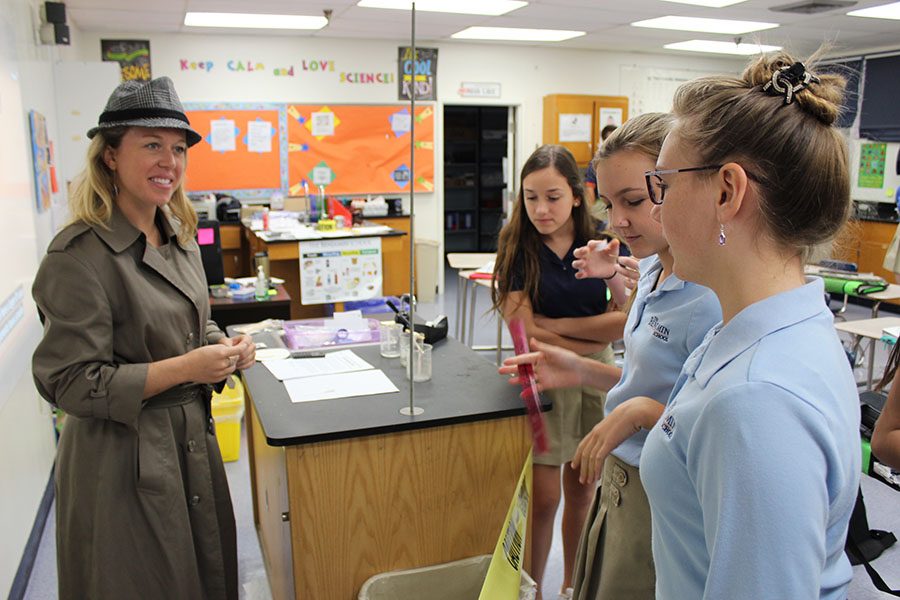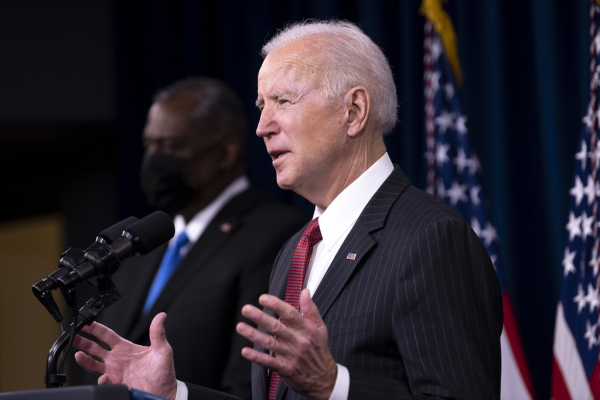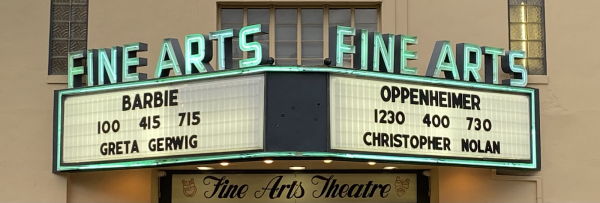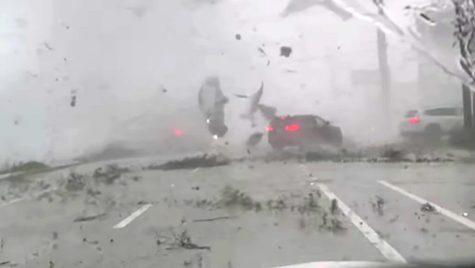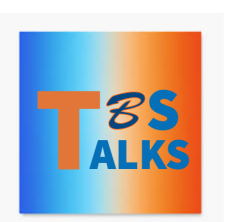Who Took the Teacher?
Eighth-grade science students engage in forensics lab to find out who kidnapped Ms. Featherston.
“Detective Holmes” (Featherston) discusses the case with eighth graders (left to right) Kayla Schneider, Nadia Poncy, and Briley Crisafi.
Detective Sherlock Holmes recently stopped by Benjamin. Okay, maybe not really, but eighth-grade science teacher Ms. Sara Featherston did her best to get her students into detective mode with one of her labs. Featherston pretended she was kidnapped and assumed the role of a detective – complete with fedora and trenchcoat – to help the students solve the faux mystery. At the scene of the crime in Featherston’s classroom, there was police tape closing off the front corner of the room with masking tape surrounding the area from where Featherston was supposedly taken. There
was even a ransom note left by the kidnapper which read, “I have kidnapped Ms. Featherston. If you would like to see her again, you must meet my demands.” In order to figure out who the kidnapper was, the students had to match the ink from one of four pens left at the scene with the ink used to write the ransom note. How did the students do this?
They employed the use of chromatography, a separation technique where paper with the ink samples on it are dipped in beakers which hold a shallow amount of water. When the water climbs up the paper, it separates out the components of the ink. All the students had to do was match the ink pattern from the ransom note with a sample from one of the four pens left at the scene to find out who the culprit was.Of course, Ms. Featherston told the students which suspects each of the pens belonged to.
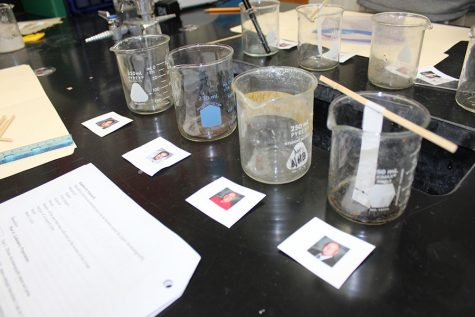
The suspects photos – (left to right:) Crisafi, Ginnetty, Keller, and Mullnix – were matched up with samples from their pens.
Who the suspects were may have been the best part of the whole lab. The four alleged criminals were Technology Integration Coordinator Mr. Nicholas Crisafi, sixth and seventh-grade English teacher Mr. Nathan Ginnety, physical education instructor Mr. Gregory Keller, and History Department Chair Mr. Marshall Mullnix.
The technique of chromatography is used by real forensic scientists to solve actual crimes. Because it’s a real-world application and was a creative lab, most students found the activity to be both stimulating and educational.
“I [really enjoyed] it because it showed us how we solve real-world problems with science,” explained eighth grader Molly Fried. “I [personally] thought it was Mr. Mullnix because he [always] seem[s] suspicious.”
The suspects in question also had a good time with it.
“[I was] honored, in a weird way [to be a suspect],” explained Crisafi. “Anytime you can bring real-world practices into the classroom and engage students in unique ways, it not only makes learning more fun, but the students may more easily remember the concepts from that lesson.” Of course, he was also relieved to be cleared of any wrongdoing. “I’m glad I was exonerated and that the justice system prevailed in proving my innocence,” Crisafi said with a smirk.
In the end, the culprit turned out to be Mr. Ginnetty, and Ms. Featherston was able to come back to teach the students again after the students solved the mystery.
“Several students approached me to investigate Ms. Featherstone’s case,” said Ginnetty. “Some were more tactful in their detective work than others. For instance, one student inquired, ‘Where
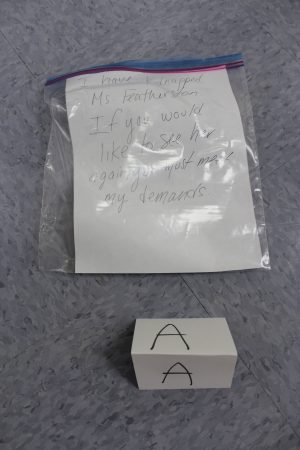
Behold Exhibit A: the ransom note left at the scene of the crime.
were you on Wednesday afternoon?’ whereas his classmate simply demanded, ‘Did you kidnap Ms. Featherston?’. I was honored to be part of such a unique and authentic measurement of students’ critical thinking skills.”
Ms. Featherston had a lot of fun conducting this lab with her students, and she went over the top to make sure that they enjoyed it while learning about chromotography.
“I came up with the idea a few years ago because my students were having a hard time understanding how chromatography works,” said Featherston. “To help alleviate some of the confusion, I decided to apply it to a real-world situation. I love getting creative with my labs and having fun with all [the students]. I am very passionate about what I teach, so I will do just about anything to get [them] as excited as I [am] about science. I loved being in character the whole day and treating my class like a real forensic lab.”
This just shows that Benjamin’s teachers will do almost anything to ensure their students are interested in what they’re learning – that even includes impersonating Sherlock Holmes!
